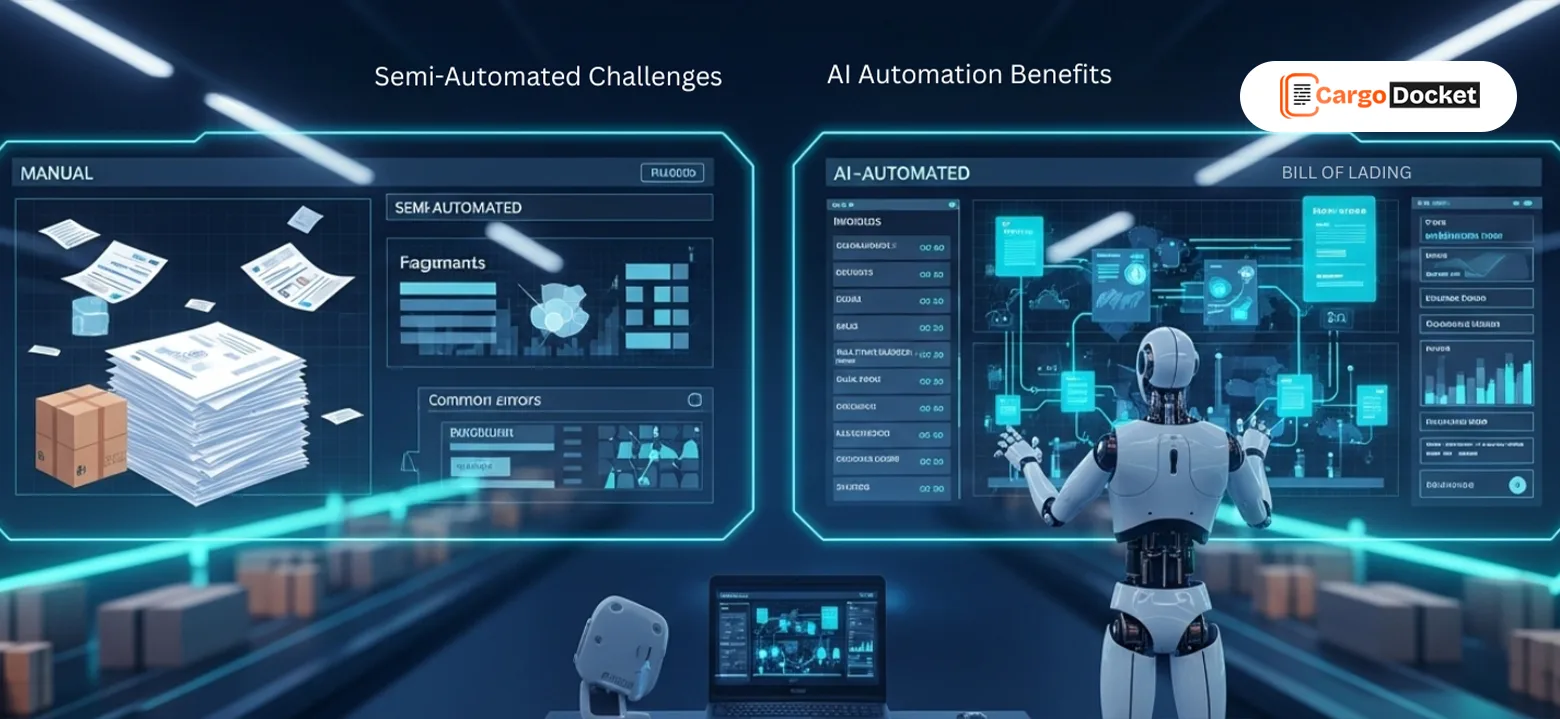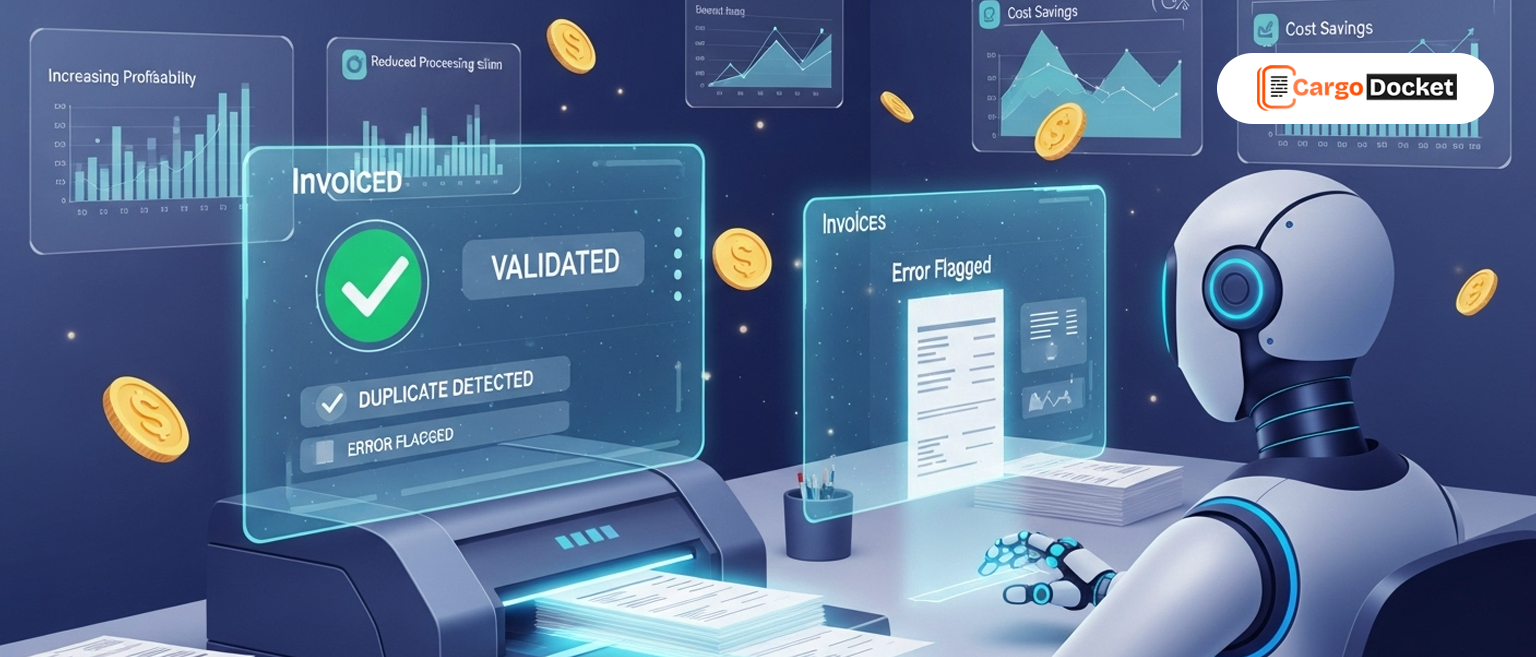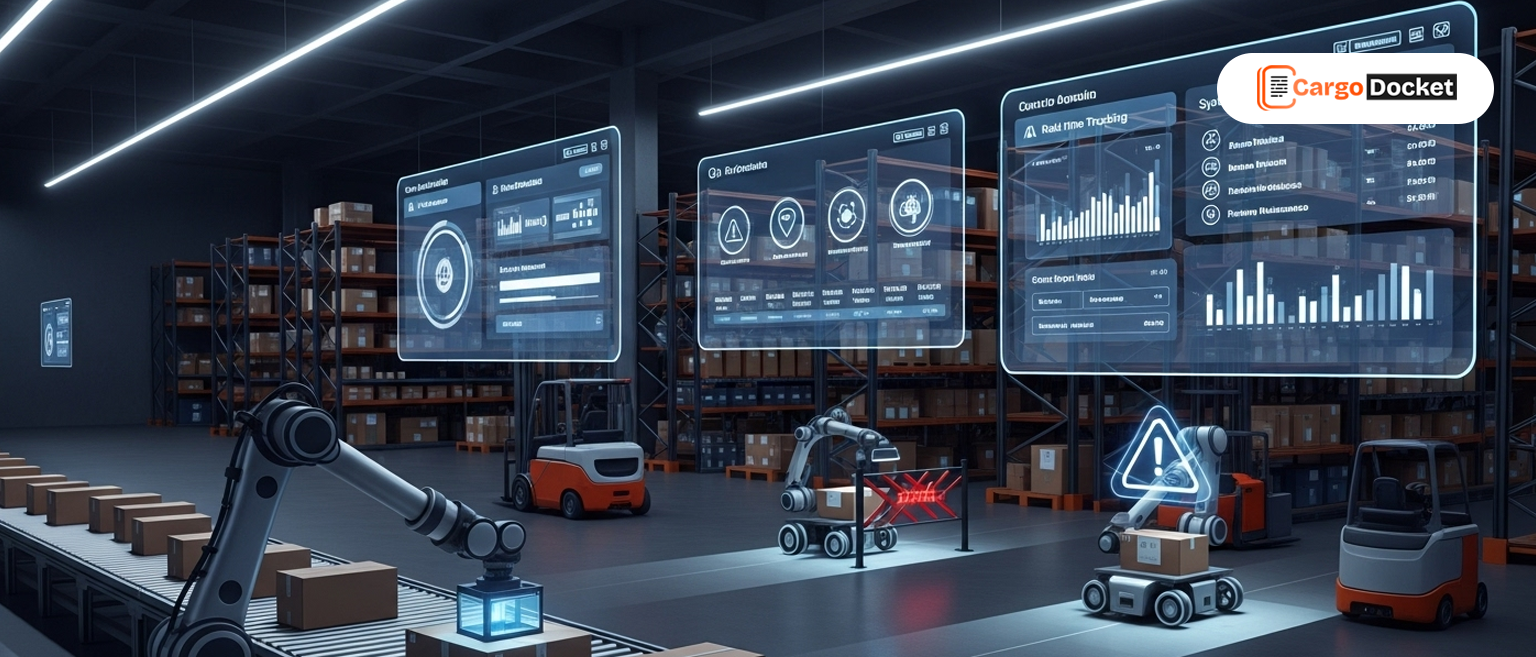If you’re part of a logistics, freight forwarding, or finance team, chances are invoice processing is one of those tasks that never seems to slow down. Every day, a pile of incoming vendor invoices lands in your inbox, needing to be opened, read, validated, keyed into your system, cross-checked against POs or accruals, and then filed away. Sounds exhausting, right?
Now imagine if most of that process could be automated.
Robotic Process Automation (RPA) can help with this. Even while RPA frequently takes center stage, OCR, or optical character recognition, is a little-known hero that silently performs a lot of tedious duties in the background.
But here’s the real question, is OCR enough on its own to automate invoice processing effectively? Or does it need a little help to get the job done right?
What is OCR and How Does it Work in Invoice Automation?
OCR, known as Optical Character Recognition, is a technology that reads and converts printed or handwritten text from scanned images, PDFs, or digital documents into machine-readable data. In simple terms, OCR allows a computer to “see” a document the way a human would, and then pull usable text from it.
In the context of invoice automation, OCR typically kicks in right at the beginning of the process. Here’s how it usually works:
- Invoices are received via email, scan, PDF, or attachment.
- OCR reads the invoice, converting it from a static document into searchable, editable data.
- The extracted data, such as invoice number, date, PO reference, vendor name, and total amount, is passed on to the automation workflow.
RPA bots then take over, matching the data to records in your ERP or TMS, validating it, flagging exceptions, and posting it to your system.
This OCR-to-RPA handoff is what makes automated invoice processing possible. Without OCR, bots wouldn’t be able to interpret non-digital data from scanned invoices or PDFs. With it, those documents become actionable.
Why OCR Alone isn’t a Complete Solution
Now, while OCR is essential, it’s not the full answer. Traditional OCR has its limitations, and in supply chain or logistics operations, those limitations can slow you down.
Here’s what OCR struggles with:
- Template dependency: Most OCR tools rely on pre-defined templates to recognize where key data sits on an invoice. But what happens when a new vendor uses a different format? Or when a vendor changes the layout? The OCR can’t recognize the fields, and the process fails.
- Low tolerance for variations: Different fonts, handwritten notes, logos, or overlapping data fields can throw OCR off.
- No context or validation: OCR doesn’t “understand” the content. It pulls the data but can’t determine if it makes sense, is accurate, or matches your internal records.
- Frequent maintenance: OCR templates and field rules need ongoing updates to stay accurate. This creates a hidden operational burden.
So, while OCR does a good job at “reading,” it doesn’t do well with “understanding”, which is exactly where RPA and AI automation comes in.
How OCR and RPA Work Together in Invoice Automation
Let’s say OCR is the engine that digitizes your invoices, and RPA invoice automation is the system that knows what to do with that data once it’s available.
Document Ingestion
The process begins when invoices are received via email or uploaded into a shared folder.
OCR Extraction
OCR scans and extracts relevant information from the document, including invoice date, vendor details, line items, totals, and tax information.
Data Structuring and Classification
The extracted information is structured into a format RPA can work with. This may include mapping it to your vendor master or GL codes.
Validation Against ERP/TMS Records
RPA bots compare extracted data with your system, like CargoWise, SAP, QuickBooks, etc., checking for discrepancies, missing info, or unmatched POs.
Exception Handling
If issues arise, such as missing PO numbers or mismatched totals, the bot flags them for human review, often through an exception dashboard.
Data Posting
Once validated, the RPA bot posts the invoice directly into the system, updates the financial records, and can even trigger payment workflows.
This workflow cuts down manual effort by as much as 86% and reduces invoice turnaround times from days to hours.
How AI Enhances Traditional OCR for Even Better Results
Traditional OCR is a great start, but modern invoice automation solutions are evolving fast. Today, AI-powered OCR (also known as Intelligent Document Processing or IDP) adds new layers of accuracy and context.
With machine learning, OCR can:
- Adapt to new invoice formats without needing new templates.
- Recognize field types based on context, not just position.
- Learn from past corrections and get smarter over time.
- Handle multi-page invoices, line-item details, and even handwritten inputs.
In other words, AI-enhanced OCR gives you the best of both worlds, speed and flexibility, without the headache of maintaining templates.
When combined with RPA, AI-powered OCR makes invoice processing truly end-to-end, transforming it from a manual burden to a simplified, intelligent workflow.
Key Benefits of Using OCR + RPA in Invoice Processing
- Faster Invoice Turnaround: Cut invoice approval cycles from several days to same-day processing.
- Fewer Human Errors: Eliminate typo-prone manual entry and duplicate records.
- Stronger Compliance: Maintain digital audit trails and document archives for every invoice.
- Scalable Workflows: Handle seasonal spikes in invoice volumes without adding headcount.
- Improved Vendor Relationships: Faster, more accurate payments improve trust and reduce back-and-forth.
Conclusion
While OCR plays a foundational role in automating invoice processing, it’s only one piece of the puzzle. On its own, it can digitize data, but it lacks the intelligence and logic to turn that data into action. That’s where RPA, supported by AI-driven OCR, takes things to the next level.
If your logistics or finance team is still spending hours entering invoice data manually, now’s the time to rethink that process. With the right tools, your invoices can process themselves, with fewer errors, faster approvals, and less stress on your team.
Ready to automate your invoice workflow from end to end? Schedule a free consultation with Cargo Docket and discover how our OCR + RPA solutions can simplify your invoicing, integrate with your ERP, and reduce manual effort by up to 80%.




